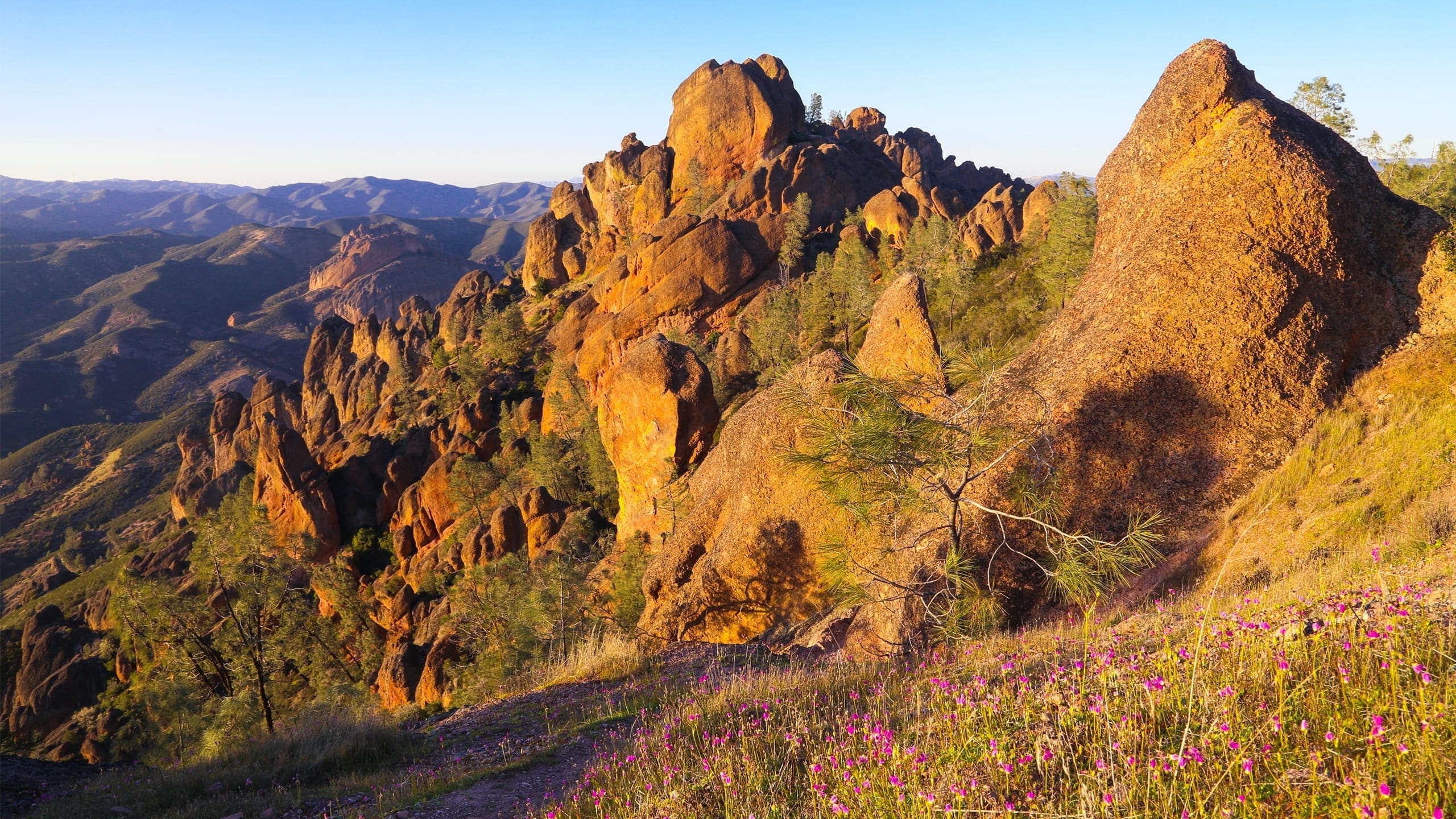About Pinnacles National Park
Pinnacles was established as a national monument in 1908 to preserve and protect the remnants of ancient volcanic processes that formed a portion of the Gabilan Mountain Range. In 2013, Pinnacles was redesignated as a national park.
Pinnacles’ proximity to the San Andreas Fault along the boundary of the Pacific Plate and the North American Plate provides a lesson in plate tectonics. The Pinnacles Rocks are part of the Neenach Volcanic Field that was active 23 million years ago, 195 miles southeast. The extensive San Andreas Fault split the field as the Pacific Plate crept north, carrying the volcanics now seen at Pinnacles.
Another geologic attraction includes the talus caves. Deep, narrow canyons were transformed into caves when huge boulders toppled from above and wedged in the canyons before reaching the ground. These boulders became the ceilings of the talus caves that host several kinds of bats and cave-dependents species.
Comprising 80% of the park’s vegetation, the chaparral ecosystem is made up of mixed shrub species quilted together over the land. Interspersed on the landscape are woodland, riparian, grassland, and rock and scree habitats. This intricate mix of habitats, topography and microclimates in turn support a rich fauna – especially of birds, reptiles, and bees. These species of the central California coastal mountains also thrive because of its long-term protected status and the surrounding private rangelands compatible with sustaining a diversity of wildlife. In addition, the vast open spaces allow Pinnacles to host one of five reintroduction sites for the endangered California condor. In the spring, wildflowers decorate the land and bird populations expand with migrants. Solitude, dark night skies, and deep quiet are the norm. These varied landscapes, wildlife and wildflower viewing, and sense of solitude attract rock climbers, hikers, and picnickers who in turn contribute to the local economy.
At the time of European colonization in the 18th century, Pinnacles was occupied by the Chalon and possibly Mutsun subgroups of the Ohlone people. The Spanish mission system had a dramatic impact on American Indians in the region. A combination of diseases and conditions under the Spanish missionaries decimated indigenous populations and their cultures. By the time European American settlers arrived during the middle of the 19th century, most native lifeways associated with the area had been lost. Between 1810, when the last of the Chalon are believed to have disappeared from the area, and 1865, when European American settlers arrived, this landscape was largely abandoned to wilderness, probably for the first time in millennia.
Schuyler Hain, a local homesteader, became known as the “Father of Pinnacles,” leading tours up through Bear Valley and into the caves. Hain spoke to groups and wrote articles urging preservation of the area. His efforts proved fruitful when President Theodore Roosevelt established the monument in 1908.
From 1933 to 1942, the Civilian Conservation Corps constructed many long-lasting infrastructure projects including creating or improving trail systems such as the dramatic Steep and Narrow trail that winds through the High Peaks. They constructed the dam that forms the Bear Gulch Reservoir and modified the trail into the caves, adding concrete steps and guard rails.
During the 1960s, the Mission 66 initiative enabled development of visitor facilities on the west side. In 1975, approximately 13,000 acres of the park were designated as wilderness. In 2002, 2,700 additional acres of wilderness were designated.
Several boundary expansions increased the park’s size from its original 2,080 acres to 27,000 acres today. The Pinnacles Ranch and Bear Valley School lands added significant natural and cultural resources that have deep meanings to native peoples and descendants of homesteading families.
Source: Foundation Document Overview – Pinnacles National Park
Fast Facts:
| Date the Park was Established: | January 10, 2013 |
| Park Area (as of 2019): | 26,685.73 acres (108.0 km2) |
| Recreational Visitors (2018 Total): | 222,152 visitors |

